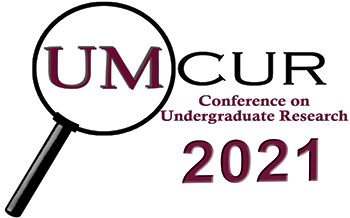Project Type
Poster
Faculty Mentor’s Full Name
Julie Wolter
Faculty Mentor’s Department
Speech Language Hearing and Occupational Sciences
Abstract / Artist's Statement
Purpose: To assess whether there is a relationship between morphological awareness and literacy success in children with and without language impairments.
Background: Morphological awareness is defined as the conscious awareness of the morphological composition of words and the ability to reflect on and manipulate morphological structures. Literacy success refers to the ability to read and write while achieving developmentally appropriate milestones in school-aged children. Developmental language disorder (DLD) occurs when a child has difficulty using and/or understanding language.
Methods: This research included data from the Orthography and Word Learning (OWL) research battery. A whole-classroom screener was administered to 620 kindergarten students in Missoula, Montana in 2019-2020. Using a cutoff score, a subset of children were selected for further assessment. We will compare demographic data, language skills assessed by the Clinical Evaluation of Language Fundamentals Fifth Edition (CELF-5), and literacy skills assessed by Woodcock-Johnson Letter-Word Identification (WJ-LWID) to determine if there are significant differences between typically developing children and those identified at-risk for DLD.
Significance: Current research establishes that morphological awareness training beginning as early as preschool age can be a predictor of literacy success in typically developing children. Other research has found that morphological awareness develops over a number of years and, because of this, likely plays a role in the development of children’s literacy skills. Additionally, morphological instruction has the potential to support literacy success for low achieving students, who typically need additional support learning to read and spell. In our own research, our aim is to compare how well children with and without language impairments perform on morphological awareness tasks and whether morphological awareness could be used to predict language and literacy outcomes.
Category
Social Sciences
Morphological Awareness Skills in Kindergarten Children at Risk For Developmental Language Disorder (DLD) and its Relationship to Literacy Success.
Purpose: To assess whether there is a relationship between morphological awareness and literacy success in children with and without language impairments.
Background: Morphological awareness is defined as the conscious awareness of the morphological composition of words and the ability to reflect on and manipulate morphological structures. Literacy success refers to the ability to read and write while achieving developmentally appropriate milestones in school-aged children. Developmental language disorder (DLD) occurs when a child has difficulty using and/or understanding language.
Methods: This research included data from the Orthography and Word Learning (OWL) research battery. A whole-classroom screener was administered to 620 kindergarten students in Missoula, Montana in 2019-2020. Using a cutoff score, a subset of children were selected for further assessment. We will compare demographic data, language skills assessed by the Clinical Evaluation of Language Fundamentals Fifth Edition (CELF-5), and literacy skills assessed by Woodcock-Johnson Letter-Word Identification (WJ-LWID) to determine if there are significant differences between typically developing children and those identified at-risk for DLD.
Significance: Current research establishes that morphological awareness training beginning as early as preschool age can be a predictor of literacy success in typically developing children. Other research has found that morphological awareness develops over a number of years and, because of this, likely plays a role in the development of children’s literacy skills. Additionally, morphological instruction has the potential to support literacy success for low achieving students, who typically need additional support learning to read and spell. In our own research, our aim is to compare how well children with and without language impairments perform on morphological awareness tasks and whether morphological awareness could be used to predict language and literacy outcomes.
